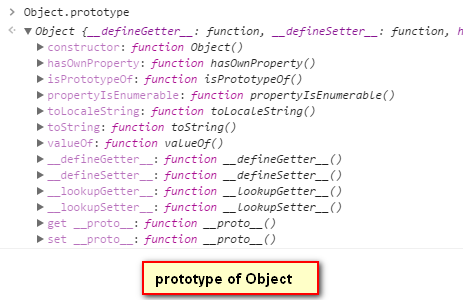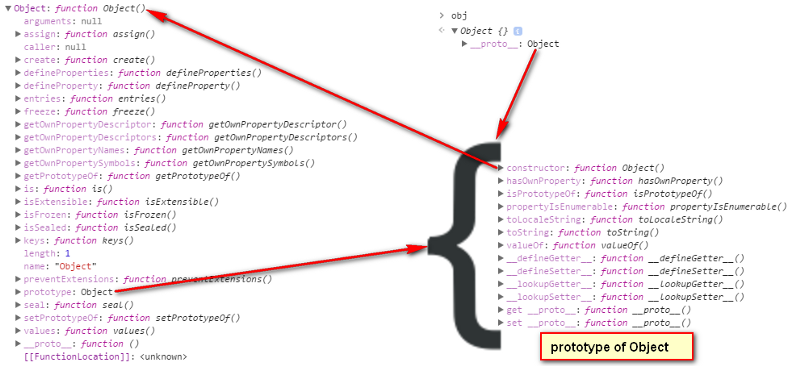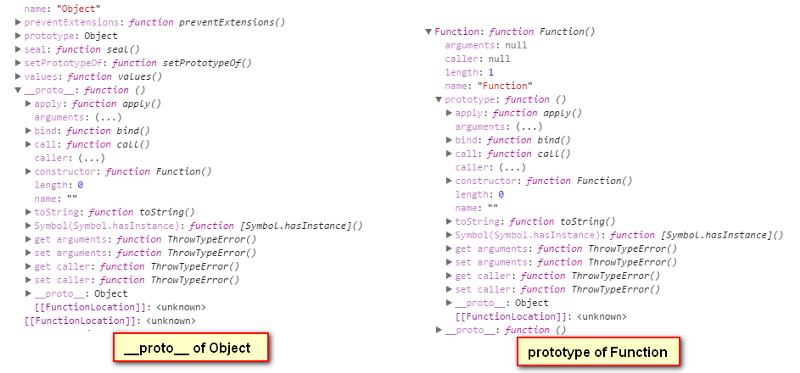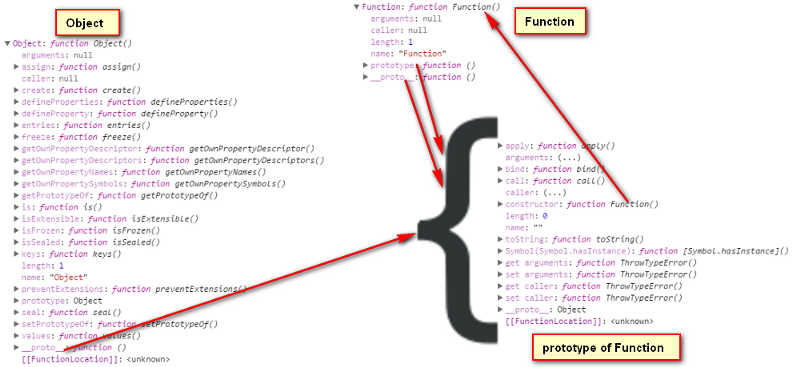by Pranav Jindal
Prototype in JavaScript: it’s quirky, but here’s how it works

The following four lines are enough to confuse most JavaScript developers:
Object instanceof Function//trueObject instanceof Object//trueFunction instanceof Object//trueFunction instanceof Function//truePrototype in JavaScript is one of the most mind-boggling concepts, but you can’t avoid it. No matter how much you ignore it, you will encounter the prototype puzzle during your JavaScript life.
So let’s face it head-on.
Starting with basics, there are following data types in JavaScript:
- undefined
- null
- number
- string
- boolean
- object
First five are primitive data types. These store a value of their type such as a boolean, and can be true or false.
The last “object” is a reference type which we can describe as a collection of key-value pairs (but it is much more).
In JavaScript, new objects are made using Object constructor function (or object literal {}) which provides generic methods like toString() and valueOf().
Functions in JavaScript are special objects which can be “called”. We make them and by using the Function constructor function (or function literal). The fact that these constructors are objects as well as function has always confused me, much in the same way the chicken-egg riddle confuses everyone.
Before starting with Prototypes, I want to clarify that there are two prototypes in JavaScript:
- prototype: This is a special object which is assigned as property of any function you make in JavaScript. Let me be clear here, it is already present for any function you make, but not mandatory for internal functions provided by JavaScript (and function returned by
bind). Thisprototypeis the same object that is pointed to by the[[Prototype]](see below) of the a newly created object from that function (usingnewkeyword). - [[Prototype]]: This is a somehow-hidden property on every object which is accessed by the running context if some property which is being read on the object is not available. This property simply is a reference to the
prototypeof the function from which the object was made. It can be accessed in script using special getter-setter (topic for another day) called__proto__. There are other new ways to access this prototype, but for sake of brevity, I will be referring to[[Prototype]]using__proto__.
var obj = {}var obj1 = new Object()The above two statements are equal statements when used to make a new object, but a lot happens when we execute any of these statements.
When I make a new object, it is empty. Actually it is not empty because it is an instance of the Object constructor, and it inherently gets a reference of prototype of Object, which is pointed to by the __proto__ of the newly created object.

If we look at the prototype of Object constructor function, it looks the same as the __proto__ of obj. In fact, they are two pointers referring to the same object.

obj.__proto__ === Object.prototype//trueEvery prototype of a function has an inherent property called constructor which is a pointer to the function itself. In the case of Object function, the prototype has constructor which points back to Object.
Object.prototype.constructor === Object//true
In the picture above, the left side is the expanded view of the Objectconstructor. You must be wondering what are all these other functions over it. Well, functions are objects, so they can have properties over them as other objects can.
If you look closely, the Object (on left) itself has a __proto__ which means that Object must have been made from some other constructor which has a prototype. As Object is a function object, it must have been made using Function constructor.

__proto__ of Object looks same as prototype of Function.When I check the equality of both, they turn out to be the same objects.
Object.__proto__ === Function.prototype//trueIf you look closely, you will see the Function itself has a __proto__ which means that Function constructor function must have been made from some constructor function which has a prototype. As Function itself is a function, it must have been made using Function constructor, that is, itself. I know that sounds weird but when you check it, it turns out to be true.

The __proto__ of Function and prototype of Function are in fact two pointers referring to the same object.
Function.prototype === Function.__proto__\\trueAs mentioned earlier, the constructor of any prototype should point to the function that owns that prototype. The constructor of prototype of Function points back to Function itself.
Function.prototype.constructor === Function\\true
Again, the prototype of Function has a __proto__ .Well, that’s no surprise… prototype is an object, it can have one. But notice also that it points to the prototype of Object.
Function.prototype.__proto__ == Object.prototype\\trueSo we can have a master map here:

instanceof Operatora instanceof bThe instanceof operator looks for the object b pointed to by any of the constructor(s) of chained __proto__ on a. Read that again! If it finds any such reference it returns true else false.
Now we come back to our first four instanceof statements. I have written corresponding statements that make instanceof return true for the following:
Object instanceof FunctionObject.__proto__.constructor === FunctionObject instanceof ObjectObject.__proto__.__proto__.constructor === ObjectFunction instanceof FunctionFunction.__proto__.constructor === FunctionFunction instanceof ObjectFunction.__proto__.__proto__.constructor === ObjectPhew!! Even spaghetti is less tangled, but I hope things are clearer now.
Here I have something that I did not pointed out earlier that prototype of Object doesn’t have a __proto__.
Actually it has a __proto__ but that is equal to null. The chain had to end somewhere and it ends here.
Object.prototype.__proto__\\nullOur Object, Function, Object.prototypeand Function.prototype also have properties which are functions, such as Object.assign, Object.prototype.hasOwnPropertyand Function.prototype.call. These are internal functions which do not have prototype and are also instances of Function and have a __proto__ which is a pointer to Function.prototype.

Object.create.__proto__ === Function.prototype\\trueYou can explore other constructor functions like Arrayand Date, or take their objects and look for the prototype and __proto__. I’m sure you will be able to make out how everything is connected.
Extra queries:
There’s one more question that bugged me for a while: Why is it that prototype of Object is object and prototype of Function is function object?
Here is a good explanation for it if you were thinking the same.
Another question that might be a mystery for you until now is: How do primitive data types get functions like toString(), substr() and toFixed()? This is well explained here.
Using prototype, we can make inheritance work with our custom objects in JavaScript. But that is a topic for another day.
Thanks for reading!
